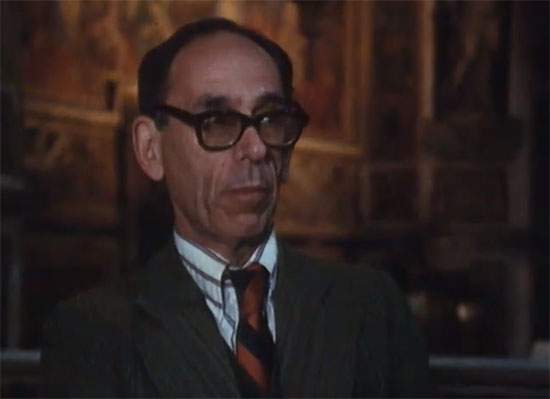Francis Haskell, the art historian opposed to lending works to exhibitions
Who knows what Francis Haskell (1928 - 2000), the unforgettable English art historian who was perhaps the one who more than any other opposed the practice of box office exhibitions, so-called blockbuster exhibitions or even, much more simply, unnecessary exhibitions, would write nowadays. His thinking is well summarized in a posthumously published volume, The ephemeral museum, which was translated into Italy by Skira and came out under the title La nascita delle mostre.
It is not easy to summarize the book’s themes in a single post. Nor, even less, is it easy to summarize Francis Haskell’s thoughts on exhibitions in one post. We will therefore limit ourselves to a fundamental aspect of exhibitions: loans. Haskell was against loans that were not useful. He spoke about this in an article published in 1990 in The New York Review of Books, for which he wrote for years: the article’s eloquent title was Titian and the Perils of International Exhibition. A major exhibition devoted to the art of Titian was being held that year, first in Venice and then in the United States: obviously the movement of masterpieces was conspicuous.
 |
| Francis Haskell in the Gesù church in Rome (Haskell, by the way, spoke excellent Italian). |
In the incipit of his article, Haskell wrote that international exhibitions of ancient masterpieces always face a dilemma: the tendency, of the lending museums, to grant their works of art only in case the exhibitions to which they are directed are of serious scholarly interest and, conversely, the sights of the museums or organizations requesting the works, whose interest would be, on the contrary, to request masterpieces to better promote the exhibition, or for reasons of prestige and, of course, box office. According to Haskell, the necessary trade-offs resulting from this practice, would rarely be satisfactory.
As noted, Haskell identified the reasons for loans as promotion, prestige, and profit. Besides, of course, what should be the only reason for lending a work: its scholarly importance for a serious exhibition. However, he also observed that in recent times there had been a proliferation of exhibitions requesting works for reasons other than the one reason that should lead museums to lend works. The ability to attract loans (rather than to lend them) was then also going to affect museum activities, reasoning that the figure of the museum director was also changing. With great insight, Haskell, in his The ephemeral museum, wrote that nowadays the ideal museum director is someone who has good political connections, a flair for publicity, energy and enthusiasm. Interest in the health of the artworks in one’s collection, according to Haskell, had waned.
Re-reading today these words published now fifteen years ago, it is natural to think that Francis Haskell’s voice has gone unheeded: the latest events concerning our artistic heritage, and which tell us of illogical requests for loans, and of masterpieces traveling the world with increasingly specious and insignificant motives, makes us aware that few have listened to Francis Haskell. Of course, in the eyes of many Haskell’s approach might seem radical (and in many respects it probably can be considered so), and perhaps even elitist. But we can say that it was, quite simply, the approach of an art historian who wanted the works to be guaranteed maximum safety.
It may seem paradoxical, but today the focus of the discipline of art history seems no longer to be thework of art, which increasingly becomes an accessory to an event, an “exclusive” outline of a location, the subject of negotiations of international diplomacy. Haskell, who would surely have reacted with strong indignation (this was the feeling he was aroused by seeing works lent for reasons far removed from the interests of art history), instead believed that the center of art history was, precisely, the works of art: it is in these terms that his contribution should be thought of. A contribution that is still very relevant today.
Warning: the translation into English of the original Italian article was created using automatic tools. We undertake to review all articles, but we do not guarantee the total absence of inaccuracies in the translation due to the program. You can find the original by clicking on the ITA button. If you find any mistake,please contact us.





























